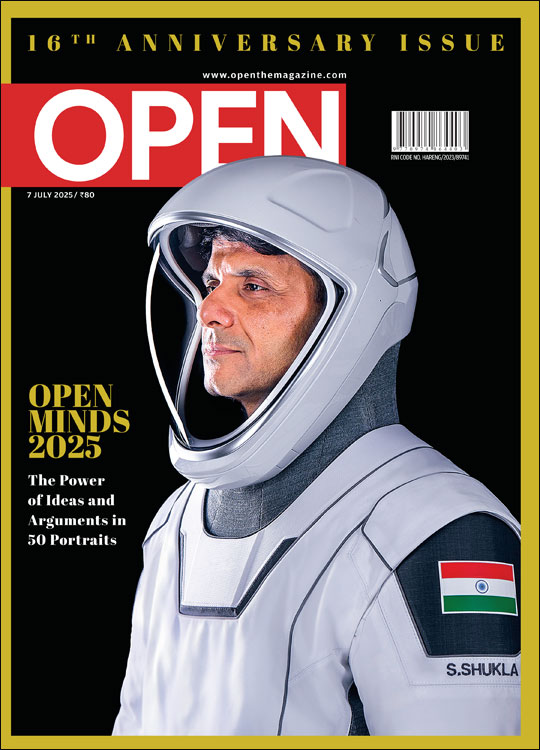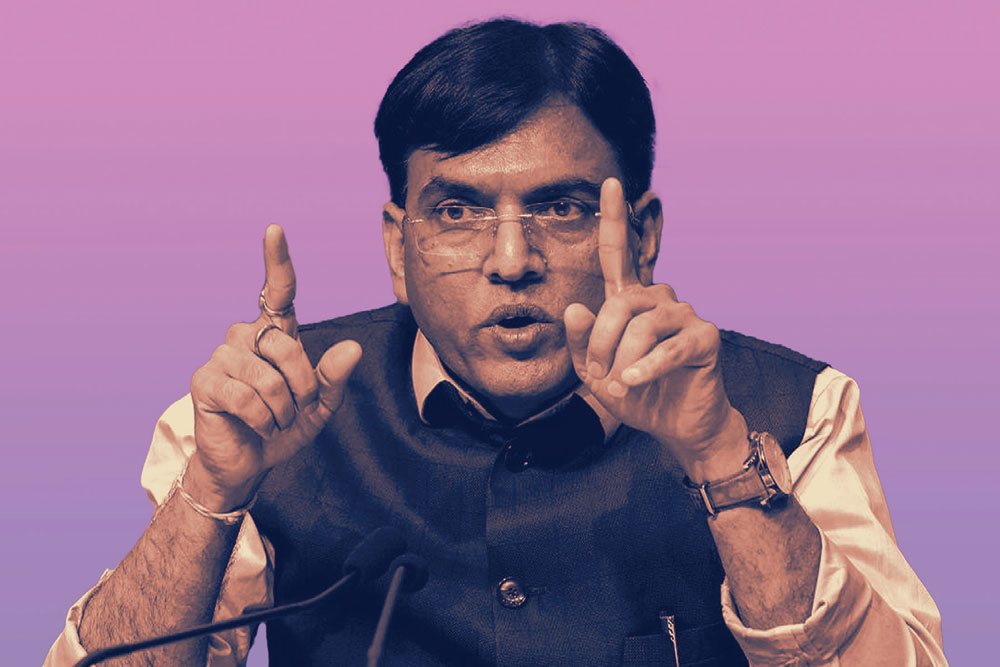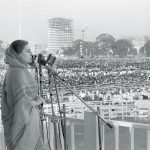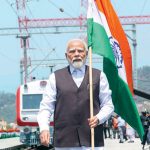End of an Illusion
Mayawati needs to build a coalition that goes beyond mere social identities
 Rahul Verma and Pranav Gupta
Rahul Verma and Pranav Gupta
 Rahul Verma and Pranav Gupta
|
07 Sep, 2016
Rahul Verma and Pranav Gupta
|
07 Sep, 2016
/wp-content/uploads/2016/09/Endofanillusion1.jpg)
DALIT POLITICS IN India is undergoing a churn. Much of it started with protests around the suicide of Hyderabad University student Rohith Vemula and the heated exchange between former HRD Minister Smriti Irani and BSP leader Mayawati on the floor of the Rajya Sabha over this incident. The flogging of four Dalit youths in Gujarat’s Una district by self-styled gau rakshaks and former Uttar Pradesh BJP vice-president Daya Shankar Singh’s demeaning remark about Mayawati added fuel to the fire. These incidents were followed by massive protests by Dalits in various parts of the country, which have sent multiple ripples across the country’s political system. It seems that Uttar Pradesh is likely to become the epicentre of this churn, and the results of the upcoming Assembly elections in the state could signal the direction that Dalit politics takes over the next few years.
It is beyond doubt that these incidents have hampered BJP’s outreach among Dalit voters. In the 2014 General Election, the BJP attracted the largest share of Dalit votes. Approximately every fourth Dalit in India voted for the BJP, and the ratio was even higher for BJP allies. Since then, Narendra Modi and the BJP have left no stone unturned to woo Dalit voters. This includes a Dhamma Chetna Yatra in Uttar Pradesh where 40 Dalit Buddhist monks travelled across the state over the past few months along with state BJP leaders to create a solid base for the party among Dalits. The abovementioned incidents, however, have exposed inherent contradictions in the effort to draw Dalits into the Hindutva fold, and may perhaps seal the fate of BJP’s expansion among them.
The uproar over Vemula, the Una incident and massive protests by BSP workers over Singh’s remark have brought Mayawati back into UP’s electoral reckoning after her self-imposed hibernation in the past two years. Her cadres are now out on the streets, mobilising support for their ‘Behenji’. On her part, Mayawati has galvanised UP’s campaign trail by addressing three mega rallies in the state: Agra on 21 August, Azamgarh on 28 August and Allahabad on 4 September. While holding such a huge rally in Azamgarh, Samajwadi Party chief Mulayam Singh Yadav’s constituency, was a signal enough to the incumbent Samajwadi Party government in the state, Mayawati also spent considerable time warning her supporters that the BJP is an ‘anti-Dalit’ party.
In the backdrop of these mainstream political actors, two social activists—Bezwada Wilson and Jignesh Mevani—have also emerged on the scene and may play a greater role in shaping the future of Dalit politics. Bezwada Wilson, national convener of the Safai Karmachari Andolan (SKA), was recently declared as one of the recipients of the 2016 Ramon Magsaysay Award for his efforts to eradicate manual scavenging. Wilson has been working with manual scavengers for the past three decades and is a well-known name among civil society activists. Jignesh Mevani shot into prominence as convener of the Una Dalit Atyachar Ladat Samiti (‘Una Dalit Fight Against Atrocities Committee’) and has been instrumental in organising various Dalit protests in Gujarat. His organisation is now planning to launch similar protests in Uttar Pradesh, Rajasthan, Bihar, Kerala and Maharashtra in the coming months. Though both Wilson and Mevani seem reluctant at this stage to plunge into electoral politics, their vocal criticism of the Modi Government and the BJP, and the mobilisation potential of their respective organisations, can indeed alter the contours of Dalit politics in the near future.
Mayawati’s last resort in putting together a winnable social coalition in UP depends on her ability to make further gains among the state’s Muslim voters
Where does the BSP fit in this new battleground of Dalit politics? At best, the BSP can now just hope to retain its base in Uttar Pradesh and create a social coalition that can catapult it to victory in 2017. Dalits constitute nearly 21 per cent of the electorate in UP, and Jatavs (Mayawati’s own caste) form nearly two-thirds of this segment. At the time of BSP’s peak electoral performance, more than eight out of ten Jatavs voted for the party. As the data presented in graph shows, there has been a decline in support for the party among Jatav as well as non-Jatav voters.
Recent evidence from a poll conducted by Lokniti-Centre for the Study of Developing Societies (CSDS) in August 2016 indicates that the party has somewhat recovered its support among its core constituents. About 75 per cent of Jatavs and 56 per cent of non-Jatav voters indicated that they might vote for the BSP in the upcoming state polls. While this may help the party in emerging as a strong contender, it would not be enough to give Mayawati a single-handed victory. The BSP faces an uphill task of forging a social coalition beyond its core base in UP. A comparison of the BSP’s performance in 2007 and 2012 in reserved and general seats presented in Table 1 shows that when the BSP performs well in an election, it wins a relatively higher proportion of seats reserved for Scheduled Castes. As all parties nominate Dalit candidates for these seats, the community’s support is more fragmented here as compared to other seats. The Dalit vote alone is not adequate to win these seats; thus it becomes imperative for the BSP to build a much broader social coalition.
The BSP victory in 2007 was partly due to support from UP’s Brahmins and the non-Yadav Backward castes. The party mobilised a section of Brahmins through ‘Brahmin Jodo Sammelans’ and ‘Brahmin-Dalit Bhaichara Samitis’. At that time, the BJP was on a decline and upper-caste voters were looking for greener pastures. Things have changed since then. The BJP has regained its position in UP’s polity after the 2014 Lok Sabha results. Upper caste voters, especially Brahmins, seem to favour the BJP over all other alternatives now. The BSP also realises this and the party has considerably reduced the number of tickets allocated to upper-caste candidates this time. In 2007 and 2012, the party had given tickets to 139 and 117 upper-caste politicians respectively.
The BSP has already declined from its earlier avatar as a potential all-India vehicle of Dalit mobilisation. It is now just a UP-centric party. A failure to win next year’s polls would further push Mayawati and the BSP into electoral oblivion
Similarly, non-Yadav OBCs were also instrumental in the BSP’s victory in 2007. This group comprises numerous small castes, but forms a substantial proportion of UP’s electorate (approximately 40 per cent). In 1990s, a large chunk of non-Yadav OBCs voted for the BJP, but later BSP succeeded in mobilising this section by clever social engineering and pushed the BJP to third position in state politics. Over the last few years, some important OBC leaders have left the BSP. The latest and arguably the most prominent in this list is the former Leader of Opposition in the Assembly Swami Prasad Maurya, who has now joined the BJP. While Maurya alone may have a very small impact on the BSP’s performance, it would be extremely difficult for the party to cross its previous best performance amongst this section of the electorate. Additionally, the BJP has struck strategic alliances with many non-Yadav OBC parties, like the Suheldev Bharatiya Samaj Party which has a significant base among Rajbhars, a caste group, and the Apna Dal (Anupriya Patel faction), which has a base among Kurmi voters.
Thus, Mayawati’s last resort in putting together a winnable social coalition in UP depends on her ability to make further gains among the state’s Muslim voters. Her speeches at recent rallies signal her party’s intention of forging a Dalit-Muslim alliance for the upcoming elections. Such an alliance with marginal support from other caste groups could ensure a simple majority in the Assembly for the BSP. However, this is not going to be as easy as it sounds. The data presented in graph indicates that less than 20 per cent of Muslim voters are likely to support the BSP in the polls next year. Moreover, an aggressive campaign by the BSP to wean away Muslims may not only lead to fragmentation of Muslim support, but also polarise the elections along religious lines, which could eventually help the BJP.
It would be a tall order for the BSP to repeat its 2007 performance, as the 2017 election is likely to be different from the past when the main competition was essentially between the BSP and the SP. The BJP, as the data suggests, is now clearly in the fray as well, and it is therefore likely to be a three-cornered contest statewide. The challenge for the BSP is that its vote share is evenly spread out across the state, which makes seat conversion relatively difficult for the party. The BJP seems to have an edge in western and eastern UP, while the SP continues to hold sway in other parts of the state, namely Awadh, Doab, Ruhelkhand and Tarai. Consequently, Mayawati seems to be getting stuck in a 1990s-like situation, where her party may fall short of crossing the threshold needed to convert votes into seats.
Nonetheless, the BSP still stands on solid ground in Uttar Pradesh politics. Mayawati remains one of the most popular leaders of the state. In the CSDS survey, close to one-fourth of all respondents preferred her for the Chief Minister’s position. A detailed analysis of the survey data clearly reveals that the BSP’s comparative advantage in this election lies in presenting Mayawati as the most reliable leader in the state for governance. Her tenure as the Chief Minister who preceded the Samajwadi Party’s incumbent Akhilesh Yadav has won positive appraisals . The proportion of voters who ‘prefer’ her five-year term is marginally higher than those who ‘prefer’ AkhileshYadav’s. The BSP is also considered to be better for providing governance and maintaining law and order. Therefore, her campaign should focus more on the positive attributes of Mayawati as an administrator, rather than merely calling out failures of Akhilesh Yadav in the state and Narendra Modi at the Centre. Mayawati herself faces charges of corruption, accused of taking huge sums of money for allotting party tickets (which has alienated some BSP cadres) and diverting state funds in building parks and statues, which a significant section of UP’s electorate thinks is a waste of public funds.
The BSP needs an innovative new message. In 2007, Mayawati’s masterstroke was to transform her party’s message from ‘Bahujanhitay, Bahujansukhay’ to ‘Sarvajanhitay, Sarvjansukhay’; from the welfare and well-being of the ‘multitudes’ to that of ‘all’. A decade later, she needs a new grammar of politics. She needs to build a coalition that goes beyond mere social identities. Her campaign managers need to project a new image of Mayawati. The 2017 UP elections will be a test of her political survival. The BSP has already declined from its earlier avatar as a potential all-India vehicle of Dalit mobilisation. It is now just a UP-centric party. A failure to win next year’s polls would further push Mayawati and the BSP into electoral oblivion. New political entrepreneurs have emerged on the scene and Mayawati must win this do-or-die battle to retain political relevance.

/wp-content/uploads/2025/06/Cover-OpenMinds2025.jpg)













More Columns
Armed with ILO data, India will seek inclusion of social security in FTAs Rajeev Deshpande
Elon Musk Returns to Rebellion Mode Against Trump Open
Without govt aid, Musk will have to head back home to South Africa: Trump Open